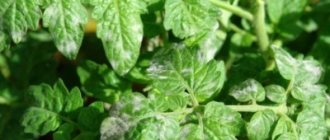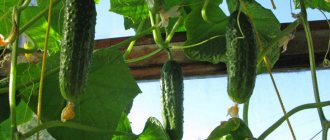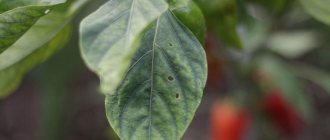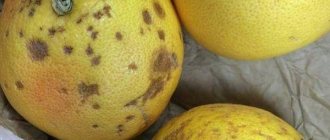Core necrosis of tomato stems (core necrosis) is a disease caused by bacteria of the genus Pseudomonas.
What are the causes of the disease? How to determine that a plant has been affected by this particular disease? Are there effective treatments? You will find answers to these and other questions in our article.
What it is?
Stem necrosis, or hollow stemness, occurs only in tomatoes. The causative agent of the disease is the bacterium Pseudomonas corrugata Roberts and Scarlett.
The disease was first discovered in 1978. The pathogen affects stems, leaves and the fruits themselves. The infection is common:
- in central Russia: Moscow, Leningrad, Vologda regions;
- in some other regions: Kemerovo, Saratov, Volgograd regions;
- in Tatarstan.
Most often found in greenhouses. In open ground conditions - less often.
Necrosis is the death of cells and tissues in a living organism, accompanied by the irreversible cessation of their functions.
The disease develops during the growing season and fruit ripening . Brown, watery, oblong necrosis and cracks appear on the stems with the formation of a creamy white exudate in the lower part. Sometimes aerial roots form. The core of the shoots darkens and cavities form in it. Leaf chlorosis occurs. They lose their elasticity and dry out quickly.
Chlorosis is a decrease in chlorophyll in leaves due to viral or bacterial diseases, leading to changes in leaf color.
Sources of infection are seeds, plant remains, and agricultural tools.
Biology
The main of infection is seeds. In addition, the pathogen is carried by plant debris. During the growing season, transmission of infection occurs by moving bacterial exudate from cracks in leaves and stems along a damp surface and entering the tissues of healthy plants through various mechanical lesions. Most often, the route of infection is through wounds caused during the removal of stepchildren. Bacteria often penetrate during watering, being sucked out by root hairs along with water. (Akhatov A.K., 2010) Favorable conditions for the development of the disease are created by lowering the temperature at night, high humidity and exceeding the optimal doses of nitrogen fertilizers. (Gabor B., 1997) The latent period lasts at least 18 days. On dry plant debris, the infection persists for no more than five months. In the soil, Pseudomonas corrugate is quickly replaced and loses its viability. With high-quality disinfection of greenhouse soils, the pathogen does not survive. (Akhatov A.K., 2010)
Symptoms
The initial symptoms of the disease begin to appear during the fruiting period . Necrosis occurs on tall tomatoes that are grown indoors.
Emerald-colored necrotic formations appear on the central stem and side shoots, which after a few days crack and turn brown. Bacteria located in the core of the stem affect the vascular system of the tomato.
Voids filled with white liquid form in the stem. The leaves first turn yellow, then change color to brown and dry out. A network of light veins appears on the fruits; necrosis of the seed coat can be seen on the cut. Affected tomatoes fall off the branch prematurely.
Photo
In the photo you can see what a plant affected by necrosis looks like.
Causes
The disease occurs under conditions favorable for the development of pathogenic microflora. The main factors for the development of necrosis include the following:
- Sudden temperature changes between day and night hours.
- Decrease in air temperature at night.
- Excess nitrogen fertilizers.
- Lack of fertilizers containing potassium, phosphorus and boron.
- High level of soil and environmental moisture (90-95%).
- Use of infected seeds.
- Failure to comply with agrotechnical measures to remove weeds.
- Working with garden tools that have not been disinfected.
Core necrosis of tomato stems persists on dried plants for up to five months. Therefore, the affected bushes should be completely disposed of: pulled out of the ground, without leaving any residue, and burned.
What can necrosis of tomato stems be confused with?
Cracks on tomato stems due to improper agricultural practices
Do not rush to break the stem lengthwise and crosswise - just carefully inspect the crack. If there are no signs of discoloration or drying out inside it, and liquid does not flow out, then you are faced with the consequences of improper care - incorrect watering, imbalance of salts in the soil, etc. The tubercles on the leaves, as well as on the stems (without the eruption of browning roots from them) can confirm your guess.
Tomato wilting
A stem affected by necrosis can no longer fully “deliver” nutrients and moisture to the leaves; deprived of these important components, the foliage begins to wither, and the top especially suffers from this. And since plant wilting can also be associated with other circumstances, the consequences are easy to confuse, especially in the early stages of the disease.
If you doubt what exactly caused the wilting, inspect the tomato bushes. With necrosis, you will find other characteristic signs, for example, the appearance of brown roots on any part of the stem, as well as cracks on it with a browning and drying core.
Once you are sure that you really have wilting, adjust the watering and fertilizing regime, adjust the temperature - and the problem should disappear. It is important to exclude infectious wilt, which can be Fusarium and Verticillium wilt. Both diseases also have their own distinctive features.
Tomato chlorosis
In addition to wilting, chlorotic spots may also appear on the foliage of a plant stem infected with necrosis. In this case, this is due to the same reason as wilting, but pathological lightening can easily be mistaken for chlorosis.
It is known that chlorosis can be infectious (due to infection by viruses), non-infectious (as a rule, due to a deficiency of nutrients) and edaphic (caused by unfavorable weather conditions). All you have to do is determine what kind of chlorosis happened to your tomatoes, but stem necrosis in this case is completely excluded.
Stem bacterial canker of tomato
This disease is so reminiscent of stem necrosis that to prevent both, experts even recommend using the same drugs, but more on them later. The only difference is that with bacterial cancer the core remains alive at the beginning of the disease, but in the case of necrosis of tomato stems it immediately turns brown.
How does the disease develop?
Bacteria enter the plant through damaged parts or through the root system . The disease begins with yellowing of the upper leaves. The core of the stem becomes watery, then gradually turns brown. Due to the filling of the stem vessels with white-cream mucus, it begins to darken and dry out.
On the lower part of the plant, many aerial roots appear, colored first milky and then brown. The leaves take on a “scalded” appearance, quickly dry out and curl. Long, up to 40 cm, brown necrotic stripes appear on the surface of the shoots.
The fruits are the last to be affected .
Whitish veins appear on them, and damaged seeds are found inside. Tomatoes that do not have time to ripen fall off on their own. The withering of the plant itself occurs gradually. If no measures are taken to combat necrosis, the diseased plant will quickly die. In case of seed infection, the death of the plant is inevitable. With secondary infection, yield loss can reach 80 percent or more.
Control measures
Not developed.
Resistant varieties and hybrids
There are no completely resistant varieties or hybrids. According to unverified data, the Red Arrow tomato hybrid is tolerant to stem necrosis - it is affected, but only slightly reduces productivity. The hybrids “Recento” and “Maeva” are less affected than others.
How to treat?
There are no treatments for a plant that is already infected. You can save bushes that are not affected by the disease.
Folk remedies
No traditional methods are used in the fight against necrosis. It is possible to eliminate the infection before planting. To do this, the seeds are soaked in aloe juice for a day.
Chemicals
The plants themselves cannot be treated. The only way is to destroy them and thereby save healthy tomatoes. The soil should be treated with antiseptic agents. Fitolavin-300, potassium permanganate solution and other drugs are suitable for this.
Fitolavin-300 is a complex broad-spectrum antibiotic. To prepare a disinfectant liquid, 20 ml of the drug is dissolved in 10 liters of water. The resulting solution is poured into a watering can and the soil on which the diseased tomatoes grew is watered. Approximate consumption: 5 l/1 sq.m of land. The cost of a 5-liter canister of the drug is 4950 rubles.
Potassium permanganate (potassium permanganate) . Dissolve 10 g of potassium in 10 liters of water and water the soil with the solution so that it is saturated to a depth of at least 15 cm. The average price of the drug is 50 rubles. There are difficulties with purchasing potassium permanganate: at the moment it cannot be purchased in a pharmacy, sometimes it is sold in garden stores.
Biological drugs
To treat seeds, you can use the biological product Baktofit, which reduces the number of primary foci of the disease. However, the use of the drug does not affect the secondary spread of the disease.
What preventive measures will help avoid the occurrence and development of the disease?
It is almost impossible to get rid of tomato stem necrosis, but you can take some preventive measures that will help prevent infection and protect the future harvest of aromatic tomatoes.
- Spraying seedlings with Trichodermin solution.
- Before sowing, the seeds need to be sorted and suspicious material rejected.
- Limit the amount of nitrogen fertilizers.
- Use disinfectants before sowing - aloe juice, potassium permanganate, Baktofit, Fitolavin.
- In greenhouses, the top layer of soil should be changed before each sowing or planting of seedlings.
- Removal and destruction of all tops after harvest.
- Regular weed control.
- The greenhouse must be well and regularly ventilated.
- Open ground must be dug up every year and disinfected with solutions of copper sulfate, Fitolavin or potassium permanganate.
Trichodermin solution
Many summer residents, after harvesting and removing all the tops, make a solution of copper sulfate and spill all the beds on which the tomatoes were planted. To prepare the solution, you need to dilute 100 g of the product in 10 liters of water.
Prevention measures
The greatest attention should be paid to preventive measures aimed at preventing the disease. It is possible to use traditional methods. For example, spray plants with garlic infusion with the addition of potassium permanganate:
- 100 g of garlic is crushed in any convenient way, poured with a glass of water and left for 24 hours.
- After this, the solution is filtered, diluted with 10 liters of water and 1 g of potassium permanganate is added to it.
Tomatoes are processed during the growing season, when the first 3-5 leaves appear, and then before flowering begins.
The most effective agrotechnical methods to combat the occurrence of necrosis:
- use of healthy seeds from proven agricultural companies;
- pre-treatment of seeds;
- growing relatively disease-resistant varieties;
- optimal ratio of nitrogen-containing and other types of fertilizers;
- timely removal of plant residues;
- compliance with temperature conditions;
- ventilation of the greenhouse to reduce humidity levels;
- using new or disinfected soil for growing tomatoes;
- treating equipment with disinfectants.
Methods for treating tomato stem necrosis
Unfortunately, there is no treatment for tomato stem necrosis in seedlings, and a plant already affected by the disease cannot be saved. But you can protect neighboring tomatoes that are still healthy.
Folk remedies
You cannot get rid of the Pseudomonascorrugate bacterium using folk remedies. Some recipes are used to disinfect seeds before planting. Let's look at a few of them.
Aloe juice
Before planting seeds, experienced gardeners and summer residents recommend placing tomato seeds in aloe juice overnight. To do this, you need to grind 5 long sheets into a pulp and dilute with water (50 ml). The seeds should be transferred to a fabric bag and immersed in aloe solution. In a day, the seeds will be ready for planting.
A solution of garlic and potassium permanganate
One of the folk remedies is to disinfect seeds with a solution of potassium permanganate and garlic:
- Take about 100 g of garlic and chop finely.
- Fill with water (1/4 liter) and leave for 24 hours.
- Pour the resulting solution into a bucket of water.
- Add 1 g of potassium permanganate.
- When the first 3-4 leaves appear on the tomato seedlings, spray them with the resulting product.
A second spraying would be appropriate a few days before flowering.
Chemical means
If in the spring foci of the disease nevertheless appear on the site, and necrotic lesions are found on the plants, then such tomatoes should be removed, and it is recommended to spill the soil in which they sprouted with a solution of “Fitolavon”. It is an antibiotic that is effective against most pathogens. The working solution consists of 20 ml of the drug diluted in 10 liters of water. They need to shed soil in the place where the affected tomato bushes grew. For 1 square meter, 5 liters of solution is enough.
Potassium permanganate can also be used to disinfect an area of contaminated soil. To do this, add 10 g of the drug to 10 liters of water and mix well. We spill the soil with the solution so that it is saturated to a depth of 15 cm.
Biological drugs
Biological agents are also used to disinfect seeds. For example, you can prepare a “Baktofit” solution: 5 g of the product is enough to treat 1 kg of tomato seeds.
As a test option, you can add the Trichoderma fungus to the seed. The method is not widespread, but this mycelium helps prevent the development of necrosis of the tomato core, and in some cases even heal the seedlings.
An aqueous solution with spores must be watered on the plants where the first signs of the disease appear. One bush should take ½ to 1 liter. The mushroom suspension penetrates the tomato vascular system and stops the development of pathogenic bacteria.
Advice from experienced gardeners
Before growing tomatoes, take care to choose the place where they will grow. Provide conditions that are comfortable for the development of tomatoes. Make the most of all ways to prevent the disease. And be sure to follow the recommended care rules.
Bacterial necrosis of the stem core very often affects tomatoes. To save the harvest, a drastic method is used to destroy infected plants in order to preserve healthy ones. Preventative measures to prevent illness are also effective.











